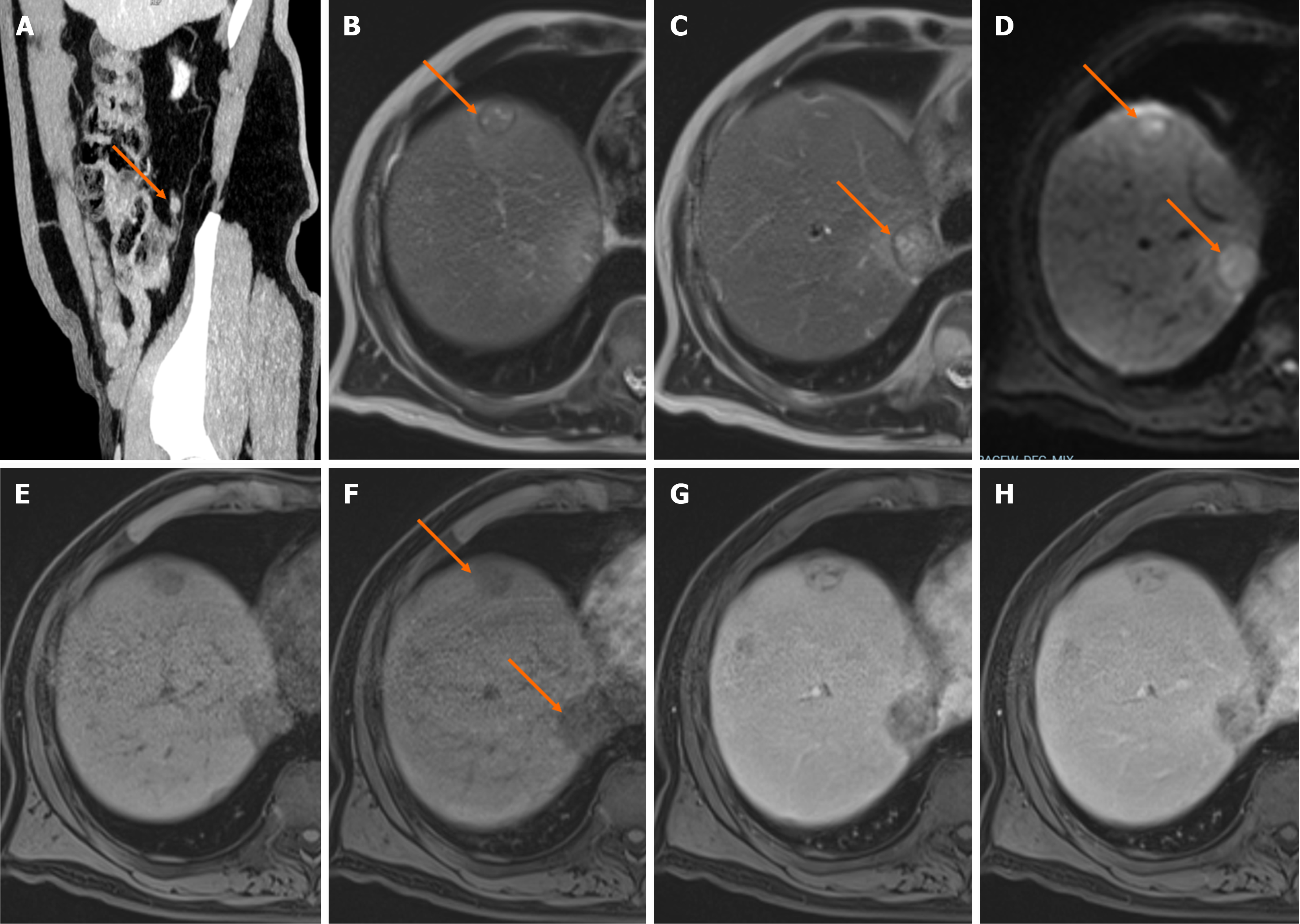Copyright
©The Author(s) 2024.
World J Gastroenterol. Feb 21, 2024; 30(7): 770-773
Published online Feb 21, 2024. doi: 10.3748/wjg.v30.i7.770
Published online Feb 21, 2024. doi: 10.3748/wjg.v30.i7.770
Figure 1 Liver metastases from an appendix neuroendocrine tumor.
In Gd-DOTA-magnetic resonance imaging of a 60-year-old male patient. A: On sagittal MIP computed tomography images, there is an enhancing lesion located at the tip of the appendix (orange arrow); B and C: On consecutive T2-weighted images, lesions appear slightly hyperintense (orange arrows); D: Diffusion restriction in lesions on diffusion weighted imaging (orange arrows); E: Before contrast administration, lesions are hypointense; F: During the post-contrast late hepatic arterial phase, lesions appear hypovascular (orange arrows); G and H: Lesions are hyperintense on the portal-venous and delayed post-contrast phase.
- Citation: Memis KB, Aydin S. Complementary comments on metastatic liver lesions with exceptional and rare cases. World J Gastroenterol 2024; 30(7): 770-773
- URL: https://www.wjgnet.com/1007-9327/full/v30/i7/770.htm
- DOI: https://dx.doi.org/10.3748/wjg.v30.i7.770









